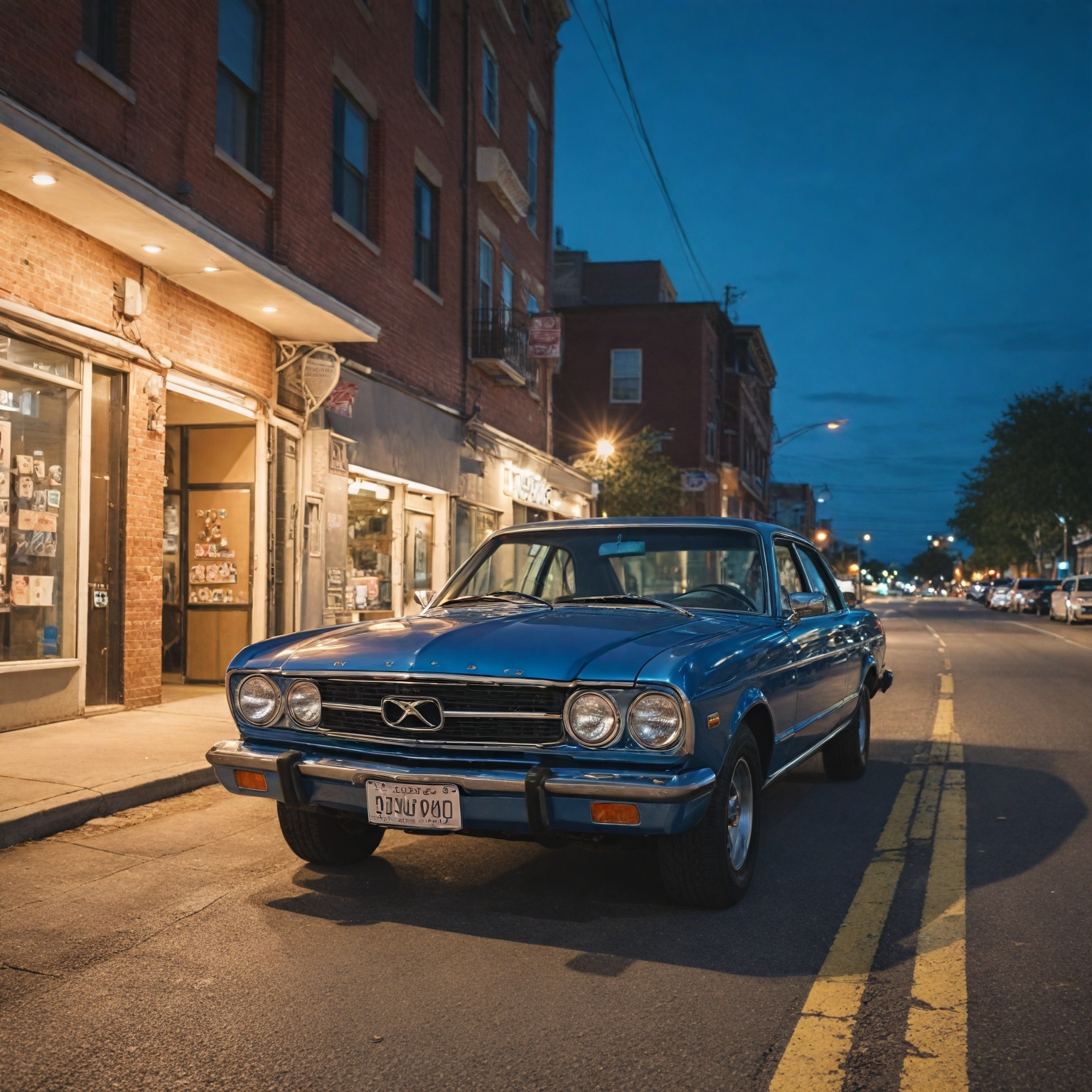Highlights:
– Trump's tariffs on Chinese imports have led to significant cost increases for wedding dresses in the U.S., posing a threat to small bridal shops heavily reliant on these goods, showcasing the unintended consequences of broad trade policies on niche industries.
– The imposition of tariffs has led to price hikes of 5% to 25% or more on wedding dresses, compelling many bridal brands to pass surcharges onto boutiques and customers, exacerbating the financial strain on brides and small businesses in an already costly wedding industry.
– Small bridal retailers are navigating challenges of managing inventory and meeting customer demands amidst tariff-related cost fluctuations, with many facing the risk of closure, highlighting the delicate balance needed in crafting trade policies that consider the impact on cultural traditions and small businesses.

Summary
Trump’s tariffs on Chinese imports have significantly raised the costs of wedding dresses in the United States, threatening the financial stability of small bridal shops that rely heavily on these goods. Initiated under the Trump administration’s 2018 trade policies targeting China’s intellectual property and trade practices, these tariffs imposed duties ranging from 10% to over 50% on a broad range of products, including approximately 90% of wedding gowns sold in the U.S., which are manufactured in China. The tariffs aimed to encourage domestic production and penalize unfair trade practices but instead have disrupted established supply chains, leading to higher prices and reduced production among bridal manufacturers and retailers.
The impact on the wedding dress industry has been profound, with many bridal brands passing tariff surcharges onto boutiques and customers, causing retail price increases of 5% to 25% or more. Notably, Mon Cheri, a leading bridal dress maker, implemented a 39% surcharge and halved its production volume since the tariffs began, only shipping orders essential to confirmed wedding dates. These increased costs compound the already high average expense of weddings in the U.S., intensifying “sticker shock” for brides and placing additional strain on small, often family-owned bridal shops that provide personalized services and culturally significant experiences.
Small bridal retailers face acute challenges managing inventory and customer expectations amid tariff-driven cost volatility. Many have advocated for tariff exemptions and explored alternative sourcing from countries like Vietnam and Myanmar, though shifting production domestically remains difficult and costly due to the specialized craftsmanship involved. Industry experts warn that continued tariff pressures risk forcing numerous independent bridal shops to close, potentially eroding the personalized retail landscape and disrupting cultural wedding traditions.
These tariffs have sparked controversy, with critics highlighting the unintended consequences of trade policy on niche industries and small businesses. While the administration sought to bolster U.S. manufacturing and address unfair Chinese trade practices, the tariffs’ broad application has increased costs across sectors and introduced uncertainty into global supply chains. The ongoing debate underscores the complex balance between economic policy objectives and the real-world impacts on consumers, small businesses, and cultural industries such as bridal wear.
Background
In response to concerns over China’s practices related to technology transfer, intellectual property, and innovation, the United States Trade Representative (USTR) initiated a Section 301 investigation in 2018. This investigation concluded that China’s actions were unreasonable, discriminatory, and burdensome to U.S. interests, prompting the Trump administration to impose tariffs on a wide range of Chinese imports valued at approximately $200 billion. Initially, these tariffs were set at 10 percent and became effective on September 24, 2018, with plans to increase their scope and severity to address China’s trade policies and encourage fairer trade practices.
The tariffs affected many consumer goods, including products as diverse as T-shirts, patio furniture, baby strollers, toys, and wedding-related items such as bridal gowns and special occasion apparel. The imposition of these duties had a significant impact on businesses embedded in global supply chains, particularly small bridal shops and manufacturers reliant on Chinese imports. Approximately 90 percent of wedding dresses sold in the United States are made in China, making the bridal industry especially vulnerable to the tariffs.
The Trump administration’s strategy aimed not only to penalize China but also to incentivize manufacturing shifts back to the United States. However, despite this goal, many bridal companies exploring alternatives to Chinese production have tended to relocate manufacturing to other countries with established garment industries, such as Vietnam, Sri Lanka, the Philippines, and Myanmar, rather than returning production to the U.S..
In addition to the impact on bridal wear, tariffs have been imposed on automotive imports and steel, affecting related industries and labor markets in North America. For instance, Stellantis paused production at two assembly plants in Canada and Mexico due to 25 percent tariffs on imported vehicles, resulting in temporary layoffs of around 900 workers at supporting plants in the U.S.. The tariffs, covering over 180 countries and affecting major manufacturing regions worldwide, have also created broad challenges for the fashion and luxury goods sectors, which face levies as high as 37 percent on exports from countries like Bangladesh and 20 percent on imports from the European Union.
Effects on the Wedding Dress Industry
The wedding dress industry has been significantly impacted by the tariffs imposed on Chinese imports, which have raised costs and posed challenges to small businesses that sell bridal gowns. Tariffs have led major bridal brands to implement surcharge fees that are passed down to both boutiques and customers. For example, Mon Cheri added a 39% tariff surcharge for shops, resulting in roughly a 15% increase in retail prices for brides. These cost increases have compelled companies to reduce production; Mon Cheri reported cutting its output by about half since the tariffs began and now only ships orders essential to meet specific wedding dates. The added expenses are forcing some bridal shops to weigh absorbing costs against passing them on to customers, with price increases on wedding dresses ranging from 5% to 25% reported by retailers.
The rising prices compound the existing financial pressures on brides, who already face high average wedding costs. According to various industry studies, the average U.S. bride spends around $2,100 on a wedding dress, contributing to an overall wedding expenditure that ranges between $31,000 and $37,500 depending on the source. The increased costs from tariffs threaten to exacerbate sticker shock and intensify competition from lower-priced online alternatives, pushing bridal shops and designers to seek new strategies for managing expenses without losing customers.
In addition to price pressures, the tariffs have complicated efforts by U.S.-based manufacturers to reshore production. While the Trump administration aimed to encourage domestic manufacturing, bridal businesses have found that producing wedding dresses in the United States involves considerable complexities and cost challenges compared to overseas production. This dynamic has reinforced the industry’s reliance on global supply chains and heightened its sensitivity to international trade policies.
Consequences for Small Bridal Shops
Small bridal shops across the United States have experienced significant disruption due to the tariffs imposed on Chinese imports, which have dramatically increased the costs of wedding dresses and related special occasion apparel. Since approximately 90% of bridal gowns are manufactured in China, according to the National Bridal Retailers Association (NBRA), these tariffs have placed immense financial pressure on independent retailers who rely heavily on imported merchandise. Many of these shops operate within tight deadlines and budgets, often handling custom orders made weeks or months in advance, making them particularly vulnerable to sudden cost increases caused by tariffs.
The tariffs, which have reached as high as 145% on some Chinese imports, have forced companies like Mon Cheri to apply a 39% tariff surcharge to bridal shops and drastically reduce their production levels to manage costs. As a result, some businesses have been compelled to limit shipments strictly to orders with confirmed wedding dates. This creates a ripple effect in the supply chain, complicating inventory management and customer satisfaction. Bridal shops are also advocating for tariff exemptions on wedding gowns to lawmakers, hoping to alleviate some of the financial burdens they face.
For many small business owners, the tariffs threaten not only their livelihoods but also the cultural rituals tied to special occasion apparel shopping. Shop owners like Sandra Gonzalez, vice president of NBRA, warn that if tariffs persist, many mom-and-pop stores may be forced to close, resulting in the loss of personalized service and unique customer experiences these shops provide. The industry’s dependence on high-quality Chinese manufacturing—ranging from intricate lace to hand-sewn beading—means that moving production domestically or to other countries is often challenging and costly.
Some bridal retailers, such as Formality Bridal, have managed to maintain lower price points by sourcing last-season gowns and private labels domestically or from countries without tariffs, yet even they face growing challenges due to increased costs. Business owners like owner Bowers-Schebal have started exploring alternative sourcing options, including Russia, to avoid tariffs, highlighting the lengths shops must go to remain competitive. Others suggest turning to consignment shops, online rental platforms, or local seamstresses to circumvent supply chain complications and inflated prices caused by tariffs.
Despite these difficulties, there are examples of businesses attempting to adapt by bringing production back to the U.S., though such moves are often only viable for higher-end bridal lines with luxury price points. For instance, a luxury bridal manufacturer near Atlanta has opened a domestic facility, motivated in part by supply chain disruptions during the COVID-19 pandemic. However, this strategy is not universally applicable, especially for shops serving more price-sensitive customers.
Industry and Stakeholder Responses
The imposition of tariffs on imports from China has significantly impacted the wedding dress industry, eliciting a range of responses from manufacturers, retailers, and industry associations. Many bridal companies have been forced to adjust their operations to cope with increased costs, which in turn threatens the viability of small shops that rely heavily on imported merchandise.
Mon Cheri, a prominent bridal dress manufacturer, has responded by implementing a 39% tariff surcharge for retail shops and drastically reducing production by approximately half since the tariffs were introduced. The company now ships only essential orders, such as custom dresses for specific wedding dates, to manage expenses. Approximately 90% of Mon Cheri’s merchandise and 80% of its bridal items are imported from China, underscoring the industry’s heavy reliance on Chinese manufacturing.
Boutiques and retailers have similarly expressed concern about rising costs. Sandra Gonzalez, vice president of the National Bridal Retailers Association (NBRA), reported that tariffs have caused dress prices to increase by 5% to 25%. Although many shops have delayed passing these costs on to customers, ongoing tariff pressures may soon force price hikes, exacerbating an already sensitive market where wedding dresses cause “sticker shock” for many brides. The NBRA has initiated a letter-writing campaign urging lawmakers to seek tariff exemptions to protect small bridal businesses from further harm.
Other bridal shop owners, such as Denise Buzy-Pucheu of The Persnickety Bride, acknowledge that passing increased costs to customers is a last resort but warn that tariff surcharges—added as a percentage-based cost shared between boutiques and consumers—have become commonplace among major bridal brands. Similarly, Morgan Stone, owner of Michelle’s Bridal, highlighted that roughly 90% of the fabrics and gowns her store sells are made in China, with some designers already charging about 8% of the retail price as a tariff surcharge.
Industry stakeholders emphasize the unique vulnerability of the wedding dress market due to the extended timeline required for design, production, and sale. The dependency on foreign manufacturing complicates supply chains, making it difficult for companies to quickly adapt to tariff-induced cost increases or source alternative production domestically. Michael, a bridal industry representative, noted that nearly all designers they work with produce gowns outside the United States, necessitating complex international logistics that tariffs only exacerbate.
The threat to small, mom-and-pop bridal shops is particularly acute. Industry leaders warn that if tariffs persist at current levels, many such shops could be forced to close, potentially eroding not only businesses but also important cultural traditions related to special occasion attire. The potential loss of these small businesses raises concerns about the broader economic and social impacts of the tariffs.
While luxury bridal brands may initially weather the increased costs more easily due to higher gross margins and wealthier clientele, the overall industry faces significant challenges. These include absorbing rising import duties or shifting costs to consumers, both of which could influence demand and availability. Moreover, with tariffs subject to change based on evolving trade policies, the bridal industry must navigate considerable uncertainty when planning inventory and pricing strategies.
Government and Policy Context
The implementation of tariffs on Chinese imports, particularly under the Trump administration, has been a significant factor influencing the costs and availability of wedding dresses in the United States. President Donald Trump declared a national emergency related to foreign trade and economic practices, imposing a series of tariffs intended to address what the administration described as unfair trade policies by China. These tariffs, which include a range of goods such as steel, aluminum, pharmaceuticals, and textiles, aimed to restore economic and national security by encouraging reciprocal trade arrangements and protecting American workers.
These tariffs on Chinese imports have escalated over time, with initial duties set at 20% increasing to as much as 54% in certain cases, impacting a wide variety of products, including those essential to the bridal industry. The administration justified these measures as necessary to leverage America’s economic position to secure borders, combat illegal migration, and address issues like fentanyl trafficking, which were seen as interconnected challenges of national security. Trade policies have also been designed with the flexibility to adjust tariff levels in response to retaliatory actions by trading partners or significant remedial steps taken by those countries.
The tariffs, often referred to as part of Trump’s broader trade war with China, disrupted established free trade practices and created economic uncertainty that extended beyond the fashion and luxury sectors to affect small bridal shops and dress manufacturers heavily reliant on Chinese imports. While these policies aimed to strengthen the U.S. economy and protect domestic industries, they also led to increased costs for businesses and consumers alike. Many bridal retailers have had to absorb higher import costs or pass them on to customers, with some considering shifts in production locations to mitigate these financial burdens.
Moreover, the evolving nature of these tariffs means that their impact is not fixed. Changes in administration priorities, trade negotiations, or economic conditions could lead to adjustments in tariff levels, creating ongoing uncertainty for bridal industry stakeholders and consumers planning weddings. The broader economic repercussions of these tariffs have been felt in stock markets and other economies worldwide, highlighting the interconnectedness of global trade policies and their far-reaching consequences.
Broader Economic and Industry Implications
The imposition of tariffs on imports from China has far-reaching consequences beyond just the bridal industry, affecting a wide range of sectors connected to weddings and special occasions. Currently, a 20% tariff on Chinese imports is set to rise to 54%, significantly increasing costs for businesses that rely on these goods. Although some companies are absorbing these costs temporarily, it is expected that price increases will eventually be passed on to consumers, with wedding dresses potentially rising by $200 to $500 on a $2,000 gown.
The broader wedding industry, which already faces high average expenditures—ranging from $31,428 to $37,500 per wedding according to various reports—is feeling increasing financial pressure. Higher tariffs threaten not only bridal shops but also ancillary services and products such as alcohol, floral arrangements, rental furniture, alterations, and food services. Many of these businesses depend on imported materials and equipment, so costs are rising even for domestically manufactured items. For example, seamstresses and bakers may face increased expenses due to tariffs on overseas sewing machines and baking supplies.
Small businesses and mom-and-pop bridal shops are particularly vulnerable to these rising costs. Without adaptations, the continued tariff burden risks wiping out these stores, which are integral to maintaining the tradition and personalized experience of wedding shopping. The loss of these small businesses would mean more than just economic damage—it would diminish the cultural ritual of selecting garments for milestone occasions. In contrast, the luxury segment of the industry is somewhat insulated due to higher profit margins and a wealthier consumer base better able to absorb price hikes or shop abroad.
The ripple effects of the tariffs extend to the global fashion industry at large. Countries heavily reliant on garment manufacturing, such as Bangladesh, face steep levies (up to 37%), while major luxury markets in the European Union are subject to a 20% tariff. These measures, part of a broader U.S. strategy to counteract unfair trade practices and intellectual property theft by China, have led to sweeping changes in trade policies that impact industries worldwide.
Media Coverage and Public Reaction
Media coverage of the impact of Trump’s tariffs on wedding dresses has highlighted significant concerns within the bridal industry, particularly for small businesses and consumers. Reports emphasize that tariffs on imports from China—where over 80% of the world’s wedding gowns are produced due to the specialized labor involved—have led to rising costs that threaten to push up the average U.S. wedding budget, which The Knot estimates at around $33,000. Key expenses such as floral arrangements, alcohol, and especially wedding dresses are becoming more expensive, placing additional financial strain on brides and their families.
The
The content is provided by Jordan Fields, Front Signals

















